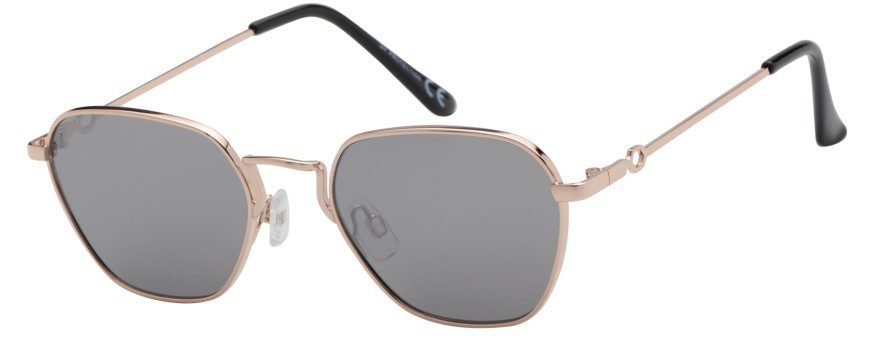
Myopic users need to balance vision correction and UV protection when wearing sunglasses. The following analysis is conducted from three aspects: technical implementation, suitable types, and user selection suggestions:
First, core adaptation technology
Optical lens superposition technology
Principle: Add myopia correction lenses to the inner or outer side of the sunglasses lenses and fix them by clamping, bonding or magnetic attraction.
Advantages: Flexible adaptation, detachable, suitable for users who already have myopia glasses to temporarily install.
Limitations: Superimposed lenses may increase thickness and weight, affecting wearing comfort. Optical distortion may occur between multiple layers of lenses.
Integrated customized lenses
Principle: Directly embed the degree of myopia, astigmatism parameters, etc. into the sunglasses lenses, and achieve thinning and lightness through freeform surfaces or high refractive index materials.
Advantages: More stable optical performance, simpler appearance, suitable for long-term wearing.
Limitations: Professional optometry and customization are required, the cost is relatively high, and the degree cannot be adjusted temporarily.
Contact lenses + sunglasses combination
Principle: Users wear contact lenses to correct their vision and then add regular sunglasses.
Advantages: High degree of adaptability and wide range of sunglasses to choose from.
Limitations: Additional contact lenses are required. Some users may experience eye sensitivity or dryness and discomfort.
Second, mainstream adaptation types
Magnetic clip sunglasses
Structure: The sunglasses clips on the myopic frame are fixed by magnetic attraction, and the clips can be quickly removed.
Applicable scenarios: Environments with frequent switching between indoor and outdoor environments (such as driving and outdoor sports).
Note: The clips should match the original frame size to avoid light leakage or obstruction of the view.
Custom-dyed sunglasses for myopia
Process: Coating or dyeing on the surface of myopia lenses to achieve the integration of UV protection and vision correction.
Color selection: Common colors include gray, brown, green, etc. The light transmittance should be selected based on the usage scenario (such as driving or fishing).
Technical challenges: Uniformity of dyeing, control of lens thickness (Users with high myopia need materials with a higher refractive index).
Pair sunglasses
Design: The frame of the sunglasses is directly placed on the outside of the myopia glasses and fixed by elastic silicone or clips.
Advantages: No need to modify the original glasses, and the adaptation cost is low.
Limitations: The set of glasses needs to be compatible with the original frame in terms of size, which may affect the appearance.
Third, user selection suggestions
Select the adaptation method based on the degree
For low myopia (≤300 degrees) : Magnetic clamps or lenses are preferred as they are cost-effective and flexible to fit.
High myopia (≥600 degrees) : It is recommended to customize integrated lenses and use high refractive index materials (such as 1.67, 1.74) to reduce the thickness of the lenses.
Consider the usage scenarios
For sports scenarios: Choose lightweight and anti-slip designed lenses or custom lenses to prevent the lenses from falling off.
Driving scenario: Prioritize the use of polarized tinted lenses to reduce glare interference.
Pay attention to the function of the lenses
Uv protection: Make sure the lens is marked with UV400 protection, blocking over 99% of ultraviolet rays.
Anti-blue light (optional) : For long-term outdoor use, anti-blue light coating can be considered to reduce the irritation of electronic screens or strong light to the eyes.
A balance between comfort and aesthetics
Weight: Prioritize lightweight materials such as TR90 and titanium alloy to reduce pressure on the bridge of the nose and ears.
Frame size: Large-framed sunglasses may increase the thickness of the lens edges, so it is necessary to choose carefully based on the prescription.
Fourth, technological development trends
Intelligent adaptive lenses
Through electrochromic or liquid crystal technology, the light transmittance of the lenses can be automatically adjusted according to the light intensity, taking into account both myopia correction and UV protection.
3D printing customization
Based on the user’s facial scan data, 3D printing personalized frames and lenses is used to enhance the fit accuracy and comfort.
Multi-functional integration
Integrate functions such as anti-blue light, polarized light and anti-fog into a single lens to meet the needs of complex scenarios.
Summary
Sunglasses suitable for myopia should be selected comprehensively based on the degree of myopia, the usage scenario and personal preferences. Magnetic clamps and sleeves are suitable for temporary needs, while custom-tinted lenses are more suitable for long-term wearing. In the future, with the development of materials and intelligent technologies, the compatibility and functionality of myopia sunglasses will be further enhanced, providing users with more convenient and comfortable visual solutions.
